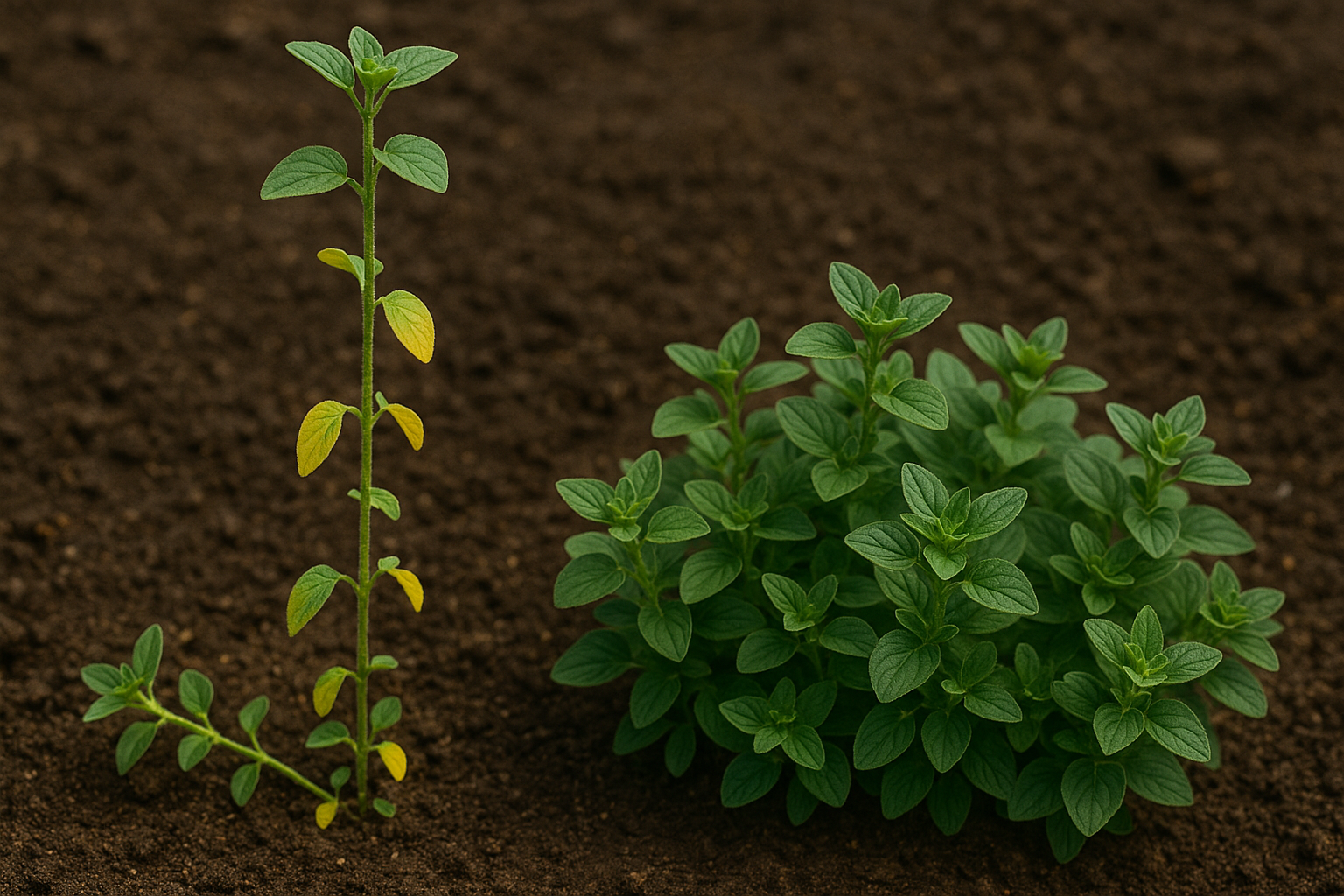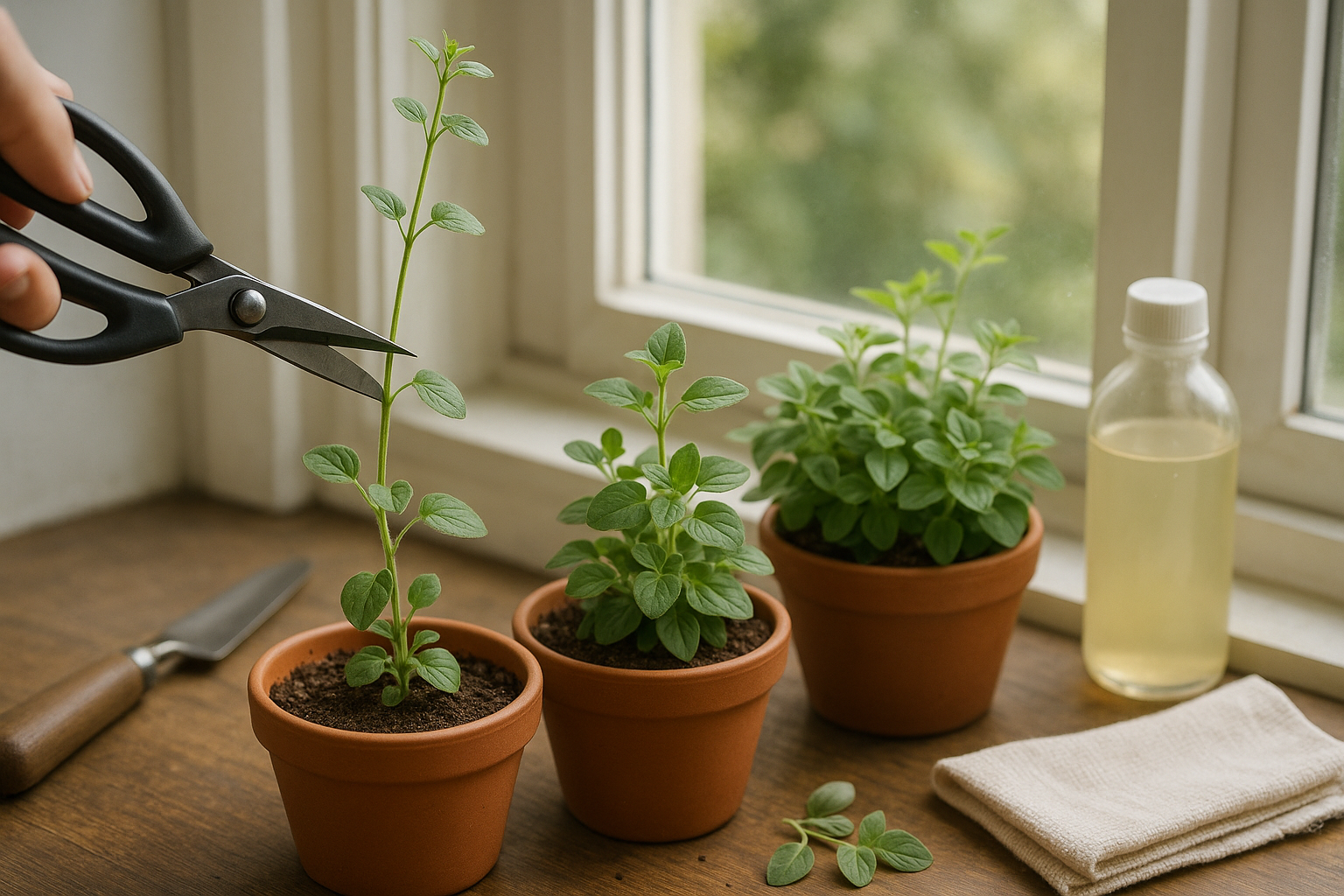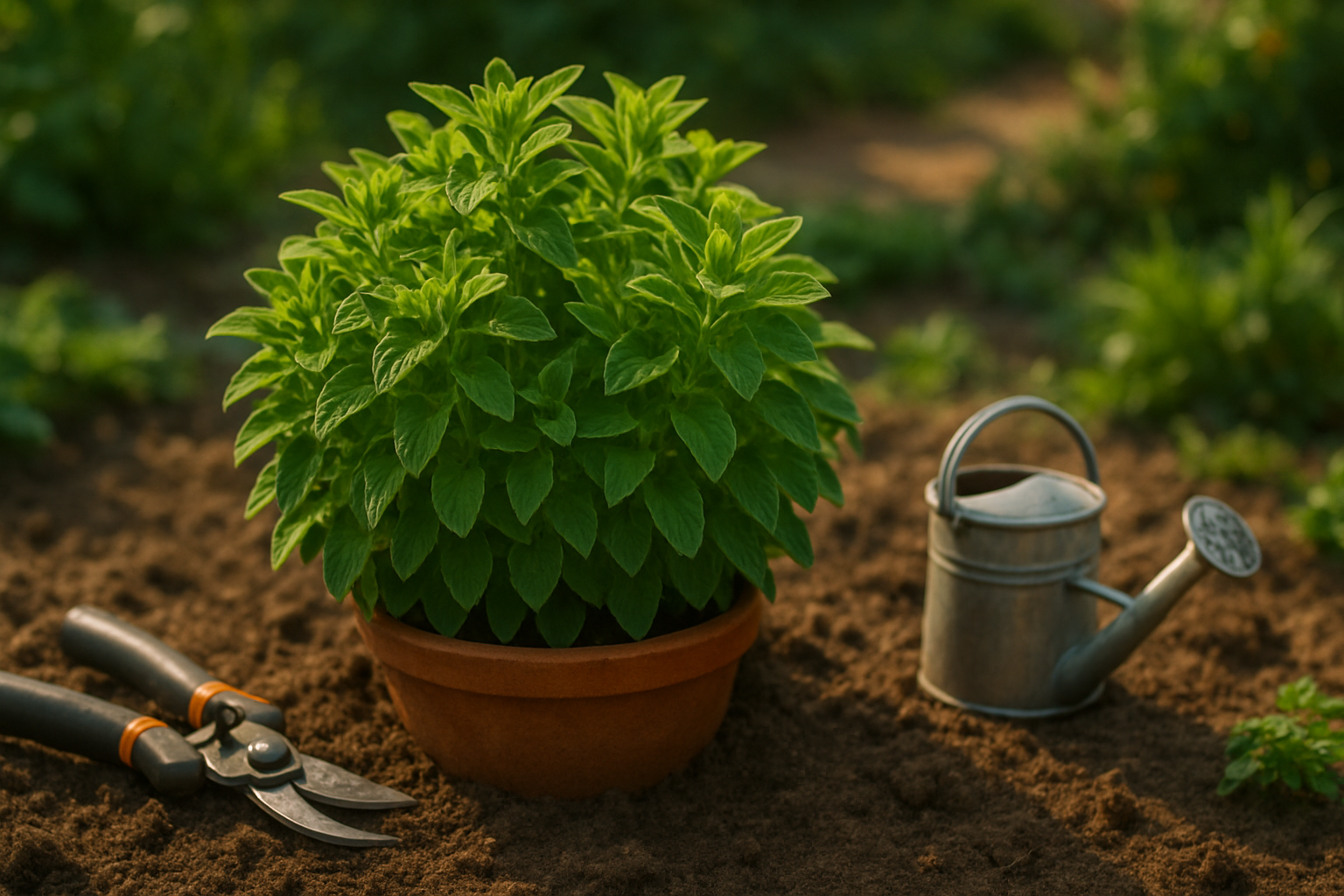Understanding Leggy Oregano

When gardeners describe an oregano plant as “leggy,” they’re referring to a plant that has grown tall and spindly, with long stems and leaves spaced far apart. Instead of developing a bushy, lush shape, leggy oregano looks thin and stretched. This usually happens when it doesn’t get enough sunlight or hasn’t been pruned regularly.
This leggy growth isn’t just an eyesore—it also affects the flavor and health of your oregano. Since leggy plants have fewer leaves per stem, they produce less of the aromatic oils that give oregano its classic punchy flavor, meaning your harvest will taste milder. Plus, the sparse structure makes the plant weaker and more vulnerable to pests and diseases.
You can spot leggy oregano by looking for:
- Longer-than-normal stems
- Sparse clusters of leaves mainly toward the tips
- Lower leaves that may be yellowing or dropping off
If your oregano starts to flop over or look bare in the center, these are clear signals it’s become leggy.
To keep your oregano healthy, give it plenty of sunlight and trim it back regularly to encourage fuller, bushier growth—your recipes (and your garden) will thank you!
Common Causes of Leggy Oregano
Leggy oregano—those long, spindly stems with sparse leaves—often signals that your plant isn’t getting what it needs. The most common culprit is insufficient sunlight; oregano thrives on at least 6 hours of direct sunlight daily, so a shady windowsill or an overcast backyard can easily lead to weak, stretched growth.
Overcrowding is another issue: if your oregano shares a pot or garden patch with other herbs, poor airflow and competition for nutrients make it reach upward for more light. Fertilizing too generously, especially with high-nitrogen products, can also trigger rapid but flimsy growth that doesn’t have time to fill out. To avoid this, stick to fertilizing sparingly or use a balanced, slow-release mix.
Temperature and humidity matter as well—oregano prefers warm, dry climates; cold snaps or soggy environments can cause stress and legginess. Don’t forget about pruning: infrequent harvesting or skipping regular pinching means the plant keeps stretching to flower instead of growing bushy and strong.
To keep your oregano compact, make sure it’s in a sunny spot, thin out crowded areas, use fertilizer sparingly, maintain good air circulation, and pinch back the stems regularly—especially when you harvest. Check for these warning signs and adjust your care routine; with a few small changes, you can encourage robust, flavorful oregano instead of wispy stems.
How to Prevent Oregano from Becoming Leggy
To keep your oregano plants healthy and bushy instead of leggy and sparse, start by ensuring they get plenty of light—oregano loves full sun, so aim for at least 6 to 8 hours of direct sunlight each day. Outdoors, plant your oregano in a spot that’s bright all afternoon, such as along a south-facing garden bed or a sunny patio. Indoors, place pots on a south-facing windowsill or under a bright grow light if sunlight is limited.
Proper spacing is also crucial: leave at least 12 inches (30 cm) between plants to prevent competition for light and airflow. Good air circulation not only helps avoid disease but also encourages even growth on all sides of the plant.
Be careful not to over-fertilize—too much nitrogen can cause rapid, weak stem growth that leads to legginess. Use a balanced, diluted fertilizer once a month during the growing season, or better yet, skip fertilizer if your soil is already rich.
Above all, keep up with regular pruning and harvesting. Use clean scissors to snip stems back by about one-third, focusing just above a leaf node. This simple step stimulates new branches and results in a bushier, more productive plant. If you notice stems stretching and leaves looking sparse, don’t hesitate to prune a little more aggressively; oregano bounces back quickly and thrives with routine trimming.
Pruning and Reviving Leggy Oregano

If your oregano plant is looking tall and spindly, proper pruning can bring it back to bushy, aromatic health in just a few simple steps. Start by inspecting the stems and identifying the leggiest, longest branches—these are your main targets.
Use clean, sharp kitchen scissors or gardening shears for the job; dull blades can crush stems and invite disease. For outdoor oregano, the best time to prune is early spring, just as new growth begins, while indoor plants can be trimmed anytime they start to look sparse.
Snip stems back by up to two-thirds, always cutting just above a pair of green leaves; this encourages regrowth from those nodes. For severely overgrown oregano, remove only one-third of the plant at once, letting it recover before further trimming.
Always sanitize your tools before and after use with rubbing alcohol to prevent spreading pathogens. After pruning, water the plant thoroughly and consider feeding it a balanced, diluted fertilizer to boost recovery—especially if the oregano is grown in a pot.
Place indoor oregano in a sunny window and ensure good airflow to prevent mildew. Outdoor oregano will thrive with a light mulch to retain moisture and keep roots cool.
Within weeks, you’ll notice bushier, stronger growth as the plant redirects its energy to new shoots, rewarding you with more flavorful leaves for your kitchen. Remember, regular, gentle pruning is the secret to lush oregano year-round.
Ongoing Care for Healthy Oregano
Caring for oregano year-round ensures lush, flavorful harvests and keeps your plant thriving. Start with consistent watering, allowing the soil to dry slightly between sessions—overwatering can lead to root rot, so check moisture by poking a finger into the soil.
During the growing season, feed your oregano lightly every four to six weeks with a balanced, diluted liquid fertilizer. Avoid heavy feeding, which can reduce flavor.
Inspect plants regularly for pests such as aphids or spider mites. Look for sticky residue, tiny webs, or curled leaves, and remove pests by rinsing with water or using insecticidal soap if necessary.
As the seasons change, adjust care accordingly:
- In summer, increase watering during heat waves.
- In fall, scale back as growth slows, and prune back stems to encourage bushier growth.
- If your oregano is grown outdoors in cold climates, mulch lightly and consider bringing potted plants indoors for winter.
Healthy oregano sports vibrant green leaves, stands upright with strong stems, and emits a robust aroma. Yellowing, wilting, or leaf loss can signal overwatering, poor soil, or pest issues—step in early to prune damaged parts or adjust your watering and feeding routine.
Consistent attention helps your oregano recover quickly from minor issues, producing more leaves with better flavor and extending harvests well into the season. Dedicating just a few minutes each week to these simple care routines will reward you with healthy, abundant oregano that elevates every meal.
Troubleshooting
If your oregano stays leggy and sparse despite your best care, it’s time to dig deeper for the underlying causes. Sometimes, advanced issues like poor soil quality can stunt growth—compacted, depleted soil prevents healthy root development and leaf production.
Diseases such as root rot or fungal infections may also weaken your plant, leaving it stretched and struggling no matter how much sunlight or pruning you provide. Occasionally, genetics play a role too; some store-bought or older plants are simply prone to legginess, no matter what you do.
If you suspect soil is the culprit, try repotting your oregano in a well-draining, nutrient-rich mix to give the roots a fresh start. Look for healthy green stems and propagate new plants from these vibrant cuttings, which can help bypass diseases that may linger in the older plant.
In cases where the oregano just won’t recover, starting fresh from high-quality seeds or purchasing a robust nursery plant can save you frustration and revitalize your herb garden. Always sanitize tools and containers to prevent spreading issues, and rotate your plants’ location if possible for optimal airflow and sun exposure.
With a little troubleshooting and patience, your next round of oregano should thrive.
